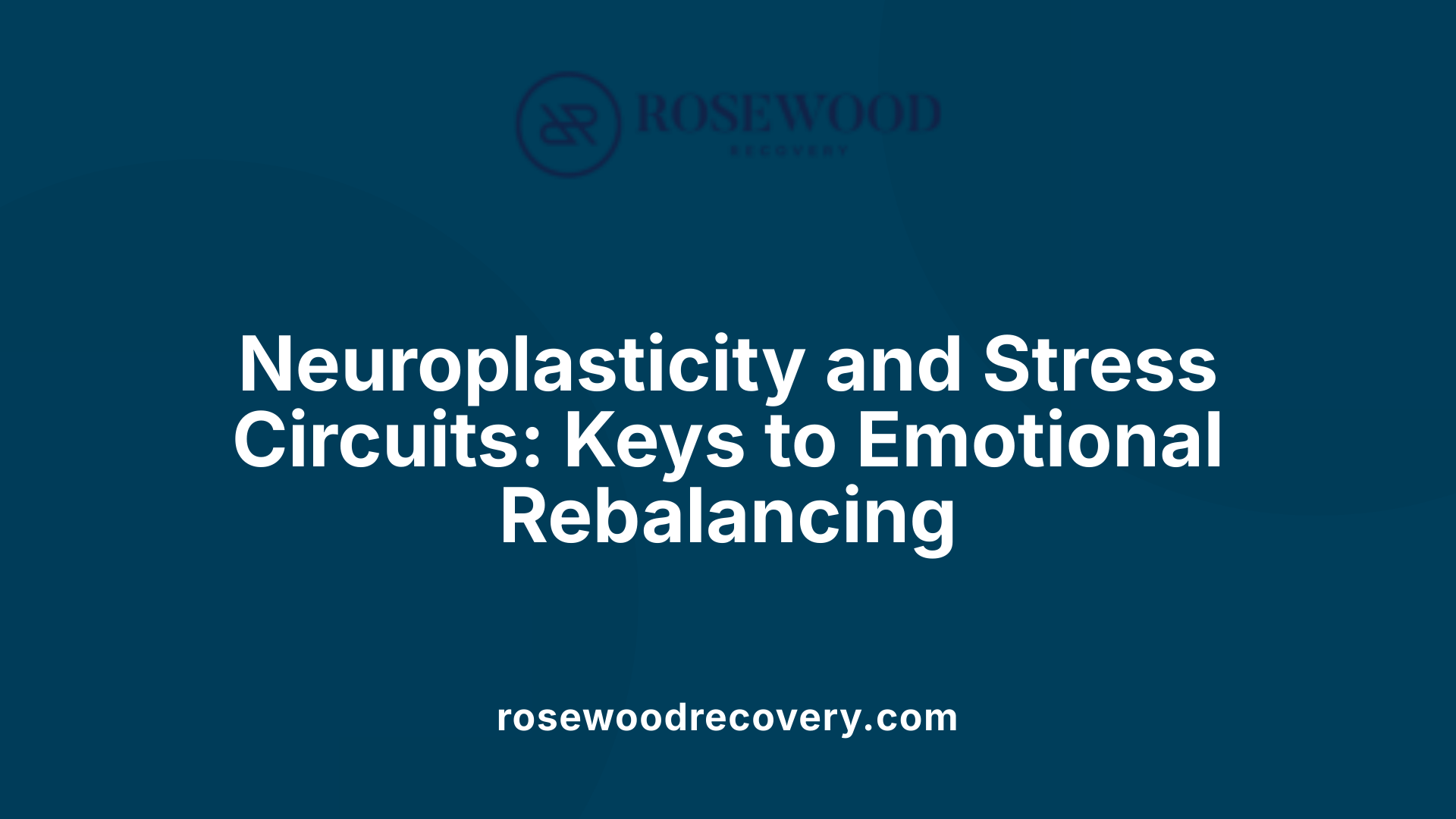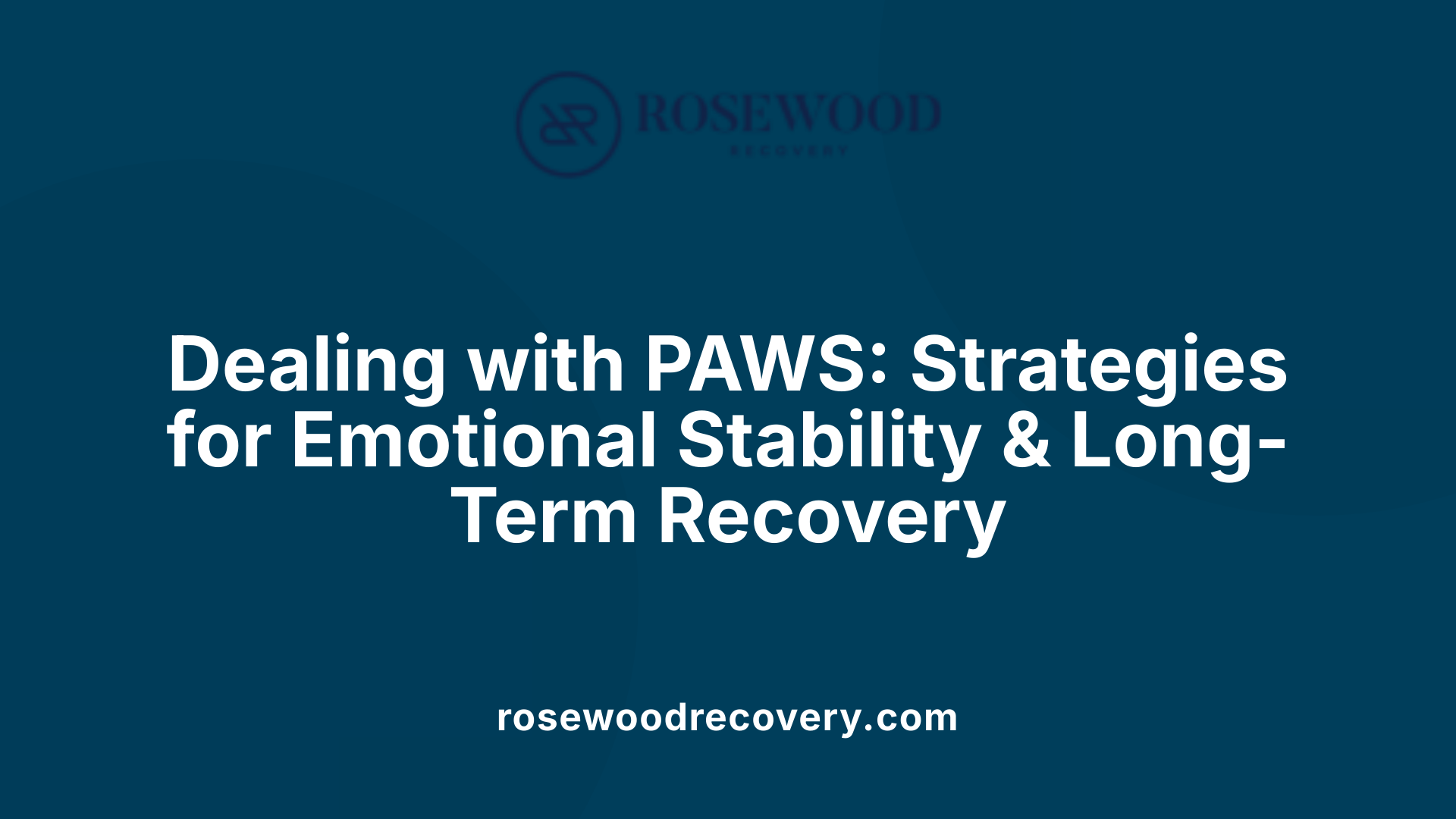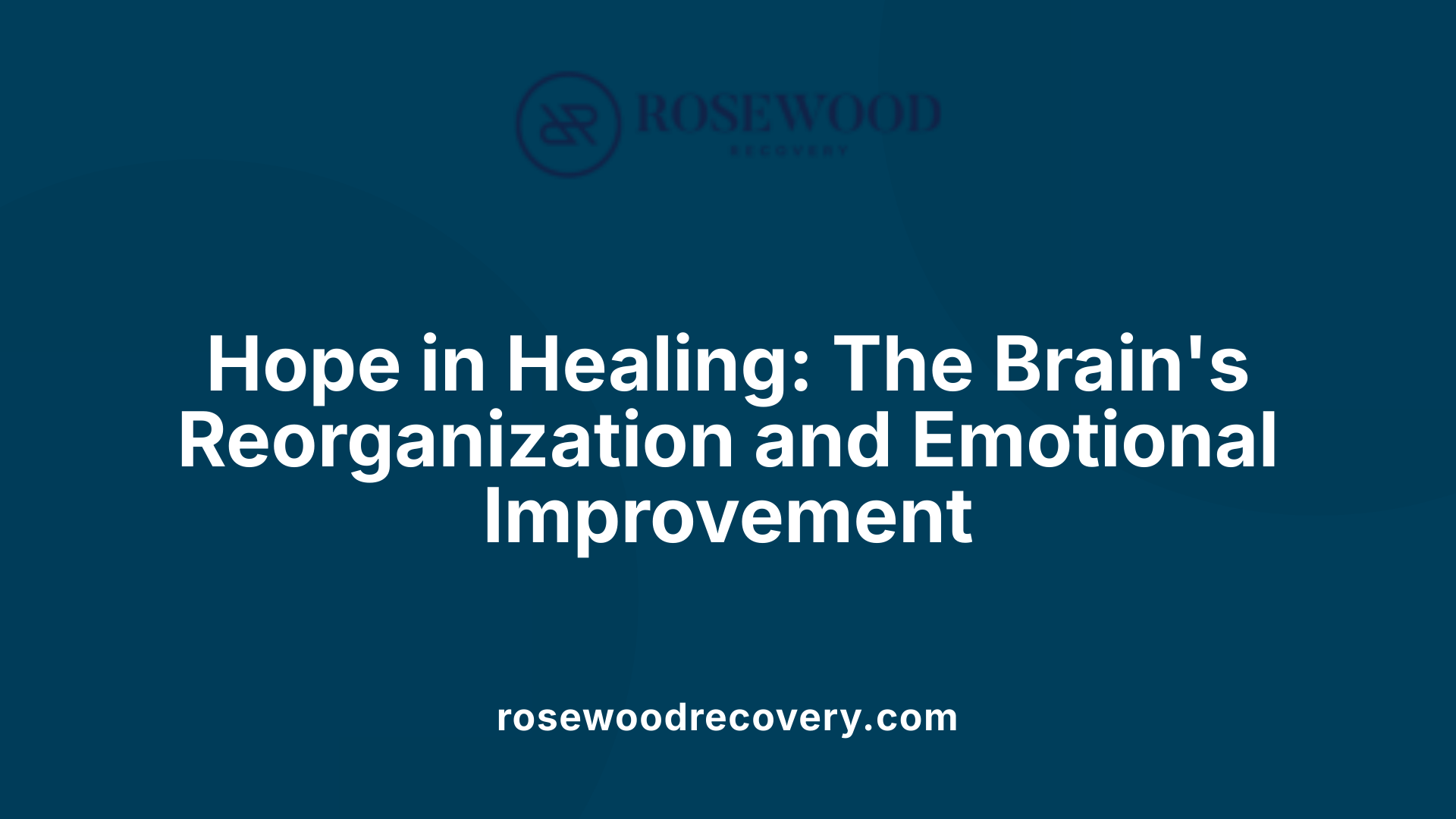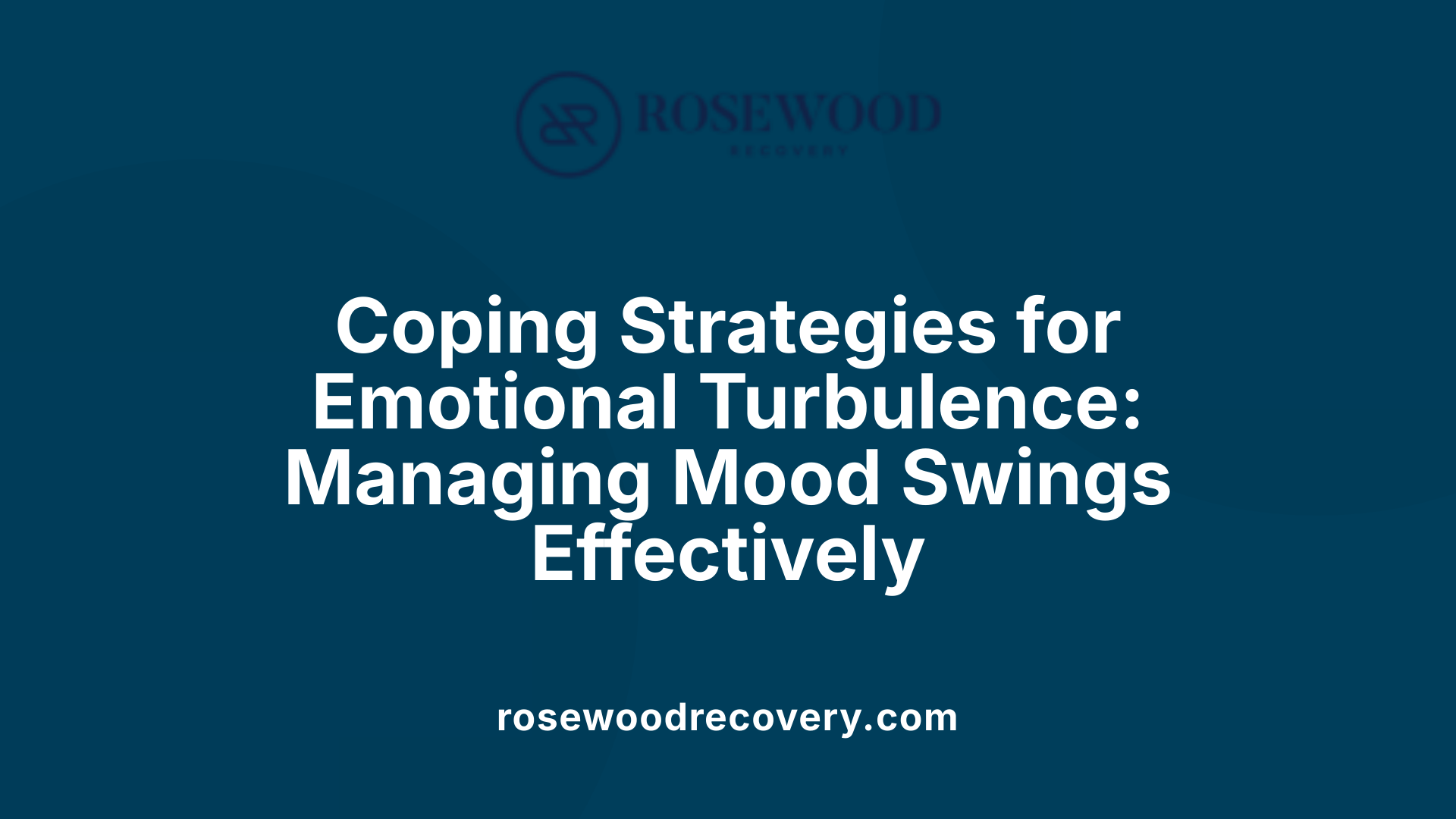Why emotional withdrawal is common in early recovery
Navigating the Emotional Landscape of Early Sobriety

Understanding the Emotional Challenges of Early Recovery
Embarking on the journey to sobriety introduces a complex tapestry of emotional and psychological challenges. Recognizing these emotional upheavals, including withdrawal symptoms, mood swings, and psychological hurdles, is crucial for fostering resilience and avoiding relapse. This article explores why emotional withdrawal is a common part of early recovery, delving into biological, psychological, and behavioral factors that influence emotional wellbeing during this critical period.
The Neurobiological Roots of Emotional Withdrawal in Early Recovery

What physiological and neurochemical changes contribute to emotional withdrawal in early recovery?
When someone stops using addictive substances, their brain undergoes significant chemical shifts that can make emotional stability challenging. One of the main contributors to emotional withdrawal symptoms is the reduction in dopamine, a neurotransmitter associated with pleasure, reward, and motivation. Chronic drug use floods the brain with dopamine, leading to receptor downregulation and decreased natural dopamine production. As a result, feelings of happiness and motivation diminish, often causing dysphoria, irritability, and sadness.
In addition to dopamine changes, serotonin levels—another key mood regulator—also fluctuate during early abstinence. These imbalances impact emotional resilience and can lead to feelings of anxiety and depression.
The brain's ability to recover and adapt is called neuroplasticity. During early recovery, this process allows brain regions involved in decision-making, impulse control, and reward processing—such as the prefrontal cortex and nucleus accumbens—to reorganize and regain functions that were impaired during substance dependence.
However, withdrawal also activates stress circuits, especially within the extended amygdala. This hyperactivation intensifies negative emotional states like anxiety and irritability, further complicating the emotional landscape of early sobriety.
Fortunately, interventions such as medication-assisted treatment, behavioral therapies, and engaging in physical activity can support neurochemical healing. Exercise boosts neuroplasticity and fosters the release of endorphins, natural mood lifters, helping to restore balance. Over time, these strategies encourage brain recovery, reducing emotional turbulence and supporting long-term sobriety.
Post-Acute Withdrawal Syndrome (PAWS): The Lingering Shadow

What is post-acute withdrawal syndrome (PAWS) and how does it relate to emotional withdrawal?
Post-acute withdrawal syndrome (PAWS) is a collection of persistent symptoms that continue for weeks, months, or even years after an individual stops using addictive substances like alcohol, opioids, benzodiazepines, or cannabis. Unlike immediate physical withdrawal symptoms such as nausea or tremors, PAWS mainly involves emotional, cognitive, and physical challenges.
Symptom-wise, PAWS can include anxiety, irritability, frequent mood swings, depression, sleep disturbances, difficulty concentrating, and physical sensations like aches or fatigue. These symptoms often fluctuate in intensity and are often triggered by stress or environmental cues. They are thought to stem from neurobiological changes in the brain's chemistry and structure, which occur during dependence and withdrawal.
Emotionally, PAWS manifests as ongoing emotional rawness, mood instability, and trouble managing feelings, making recovery more complex. This phase is crucial because it can influence relapse risks; unmanaged symptoms may lead individuals to seek relief through substances again.
Managing PAWS requires a comprehensive approach, including medications to stabilize brain chemistry, therapy to develop coping skills, maintaining good sleep routines, and strong support systems, all aimed at helping individuals navigate through these emotional upheavals.
Understanding the link between PAWS and emotional withdrawal highlights the importance of patience and ongoing care during recovery. Recognizing these symptoms early and addressing them with appropriate interventions can significantly improve chances of sustained sobriety and emotional health.
The Duration and Resilience of Emotional Withdrawal Symptoms

How long do emotional withdrawal symptoms typically last, and are they permanent?
Emotional withdrawal symptoms during early recovery from addiction can vary widely in duration. Typically, these symptoms last from several months up to two years post-cessation of substance use. The initial physical symptoms such as headaches, tremors, and fatigue tend to resolve within days to a few weeks. However, psychological and emotional challenges, including anxiety, depression, irritability, and cravings, often linger much longer.
This prolonged emotional upheaval is commonly associated with Post-Acute Withdrawal Syndrome (PAWS), which can extend the recovery process considerably. The duration depends on various factors, such as the type of substance abused, how long the individual used it, their biological makeup, and the level of support received during recovery.
While many individuals notice a gradual decrease in emotional intensity over time, these symptoms can sometimes fluctuate or be triggered by stress or environmental cues. Such triggers may cause temporary setbacks but generally do not mean that emotional withdrawal is permanent.
Most importantly, these emotional symptoms tend to improve as the brain heals and rebalances neurotransmitters like dopamine and serotonin. Neuroplasticity—the brain's ability to reorganize itself—offers hope for recovery, fostering the possibility that emotional and psychological stability can be restored eventually.
In summary, although emotional withdrawal symptoms can be intense and long-lasting, they are not necessarily permanent. With ongoing support, healthy coping strategies, and time, most individuals experience significant improvement in their emotional health during recovery.
Strategies for Managing Emotional Turbulence During Sobriety

What coping strategies can help manage emotional withdrawal and mood swings during early recovery?
Managing emotional ups and downs in early sobriety can be challenging, but several effective strategies are available to support emotional stability. First, engaging in therapy, especially approaches like Cognitive Behavioral Therapy (CBT) or Dialectical Behavior Therapy (DBT), can significantly help individuals process their feelings and build resilience against mood swings.
Mindfulness practices, including meditation, deep breathing exercises, and relaxation techniques, are powerful tools for calming the mind and regulating stress. Incorporating these into daily routines can reduce anxiety and improve emotional control.
Building a supportive environment is vital. Joining recovery groups or connecting with supportive friends and family provides a sense of safety and encouragement. Sharing experiences with others who understand the recovery journey helps normalize emotional fluctuations and reduces feelings of isolation.
Establishing a structured daily routine fosters stability, while engaging in hobbies or physical activities like walking, yoga, or journaling offers healthy outlets for emotions and promotes well-being.
Practicing self-compassion is crucial. Recognizing that mood swings are a natural part of healing helps reduce self-criticism and frustration.
In summary, combining therapy, mindfulness, social support, and self-care practices creates a comprehensive approach to managing the emotional rollercoaster typical in early sobriety. These strategies support emotional resilience and lay a foundation for long-term recovery.
The Importance of Emotional and Psychological Understanding in Recovery
Why is understanding emotional withdrawal important for recovery and relapse prevention?
Understanding emotional withdrawal is crucial in addiction recovery because it sheds light on the emotional upheaval experienced during early sobriety. When individuals stop using substances, their brain chemistry begins to recalibrate, affecting neurotransmitters like dopamine and serotonin. This process can lead to detachment from feelings, social disconnection, and feelings of isolation and despair.
Such emotional numbness and rawness may increase vulnerability to relapse, especially if unrecognized or unmanaged. By identifying signs of emotional withdrawal early, individuals can seek targeted support through therapy, support groups, or coping strategies to foster emotional regulation.
Emotional withdrawal often ties back to underlying issues such as past trauma, guilt, shame, or neural changes linked to the prefrontal cortex's functioning. Addressing these underlying causes can build emotional resilience and help recover a sense of connection with oneself and others.
Personalized treatment plans that focus on developing emotional intelligence and managing depressive or anxious symptoms are more effective. Recognizing approach and withdrawal behaviors guides tailored interventions, encouraging individuals to engage emotionally and rebuild trust in social relationships.
In summary, understanding emotional withdrawal not only aids in preventing relapse but also promotes deeper psychological healing. It helps individuals navigate the emotional landscape of recovery more safely, reducing the risk of returning to substances as a way to numb emotional pain. This comprehensive approach fosters sustainable, long-term sobriety by emphasizing emotional well-being as a core component of recovery.
Role of Support Systems and Lifestyle Choices in Emotional Stability
Support from recovery programs is essential in managing the emotional ups and downs during early sobriety. Therapies like counseling, group meetings, and peer support provide safe spaces to share feelings and gain guidance, helping individuals navigate mood swings and emotional turbulence.
Building healthy habits also plays a crucial role. Engaging in regular exercise releases endorphins that boost mood, while balanced nutrition and adequate sleep restore brain chemistry and physical resilience. Self-care activities like journaling, meditation, and hobbies help process emotions and reduce stress.
Community engagement offers additional support. Connecting with others in sober environments fosters a sense of belonging and reduces loneliness. Participating in social activities absent of substances reinforces positive routines and emotional stability.
Implementing these lifestyle skills and support resources creates a robust foundation, aiding emotional recovery and increasing the chances of long-term sobriety.
| Support Systems | Benefits | Examples |
|---|---|---|
| Recovery programs | Emotional guidance | Support groups, therapy |
| Healthy routines | Mood regulation | Exercise, proper sleep |
| Community groups | Social connection | Sober clubs, volunteer work |
The Holistic Approach to Emotional Recovery in Early Sobriety
How do integrated treatments support emotional stability?
Integrating therapies such as cognitive-behavioral therapy (CBT), medication-assisted treatment, and support groups helps normalize brain activity and manage emotional upheaval. These combined approaches address both physiological and emotional challenges by supporting neurotransmitter balance, reducing cravings, and building coping skills.
What role does mentorship and peer support play?
Connecting with others in recovery provides encouragement and understanding. Support systems like peer groups and mentorship foster a sense of belonging, help share coping strategies, and reduce feelings of loneliness and isolation. These relationships are vital for emotional resilience, especially during the unpredictable early stages.
How can self-care practices promote emotional well-being?
Self-care routines—such as maintaining balanced nutrition, engaging in regular physical activity, practicing mindfulness, and prioritizing sleep—strengthen emotional health. Journaling, meditation, and gratitude exercises shift focus from negative thoughts to positive experiences, helping individuals navigate mood swings more effectively.
| Treatment Strategy | Focus Area | Additional Benefits |
|---|---|---|
| Integrated therapies | Physiological and emotional support | Reduces cravings, stabilizes mood, enhances coping skills |
| Peer and mentorship support | Social connection and motivation | Alleviates loneliness, fosters accountability, promotes emotional growth |
| Self-care routines | Emotional resilience | Improves sleep, boosts mood, and boosts overall wellness |
Employing these approaches collectively creates a comprehensive framework that nurtures emotional health and supports long-term sobriety.
A Path Toward Emotional Recovery and Resilience
Navigating the emotional landscape of early sobriety involves understanding the neurobiological, psychological, and social factors at play. While emotional withdrawal can be challenging and sometimes intense, it is a natural part of the brain's healing process. Recognizing these symptoms, employing effective coping strategies, and seeking support can significantly improve emotional stability, reduce the risk of relapse, and foster long-term recovery. As neuroplasticity aids the brain's recovery, individuals are encouraged to remain patient, compassionate, and committed to their journey. With time, effort, and the right resources, emotional balance can be restored, empowering individuals to rebuild their lives with resilience and hope.
References
- Why Early Sobriety Mood Swings Happen (And How to Cope)
- Sadness After Sobriety: Understanding the Emotional Rollercoaster
- Managing Mood Swings During Withdrawal and Early Recovery
- Neuroscience: The Brain in Addiction and Recovery
- The Emotional Side of Detox: Anxiety, Depression and Cravings
- What Is Post-Acute Withdrawal Syndrome (PAWS)?
- 7 Common Emotions During Sobriety and How to Cope with Them
More Articles
Recovery Begins Here
Click below to get in touch and schedule a consult call with our team to begin your journey towards happiness and freedom.
Rosewood Recovery does not discrimate against any person because of the race, color, religious creed, ancestry, age, sex, sexual orientation, gender identity, national origin, handicap or disability or the use of a guide or support animal because of the blindness, deafness or physical handicap.





